History Wines
Deepwood Cellars
San Luis Obispo County History Library Blend Red Blend 2013
... works perfectly for our palate — 7 years ago

Château Brane-Cantenac
Grand Cru Classé en 1855 Margaux Red Bordeaux Blend 2005
I have a six-pack of this 05. I thought after 10 years in bottle, it would be interesting to check in on its evolution. While tasty, I’ll wait another 8-10 to open another. Even after 2-3 hours in the decanter, it’s still a very young adolescent. On the nose, slightly sour blackberries & dark cherries, dark currants, baked black plum, haunting blue fruits, anise, whiff of spice, steeped tea, dry stones, dry crushed rocks with dry top soil, caramel, vanilla with fresh & dry red florals. The body is thick & full. Tannins are starting to round out. It’s velvety on the palate. The fruits are; bright, fresh & ripe and really show the greatness of the 05 vintage. Dark currants, blackberries, dark cherries, baked black plum, haunting blue fruits, baked strawberries, cherries, raspberries on the long set, dark spice, clay & loamy dry top soil with crushed rocks, dry stones, cigar with ash, graphite, dry stems, slight herbaceous character, mint, used leather, clove, caramel, vanilla, fresh & dry red florals with violets. The round acidity is about perfect. The structure and length are still strong. The balance is in harmony. As for the long finish, it’s lush, ruby, rich and well polished. Photos of; Chateau Brane Cantenac, large wood vats, Henri Lurton and Estate vines. Producer notes and history...Chateau Brane Cantenac began in the early 17th century. At the time, the estate was known as Domaine Guilhem Hosten. Even that far back, wine was produced from the property. In fact, the wine was so highly regarded it was one of the more expensive wines in Bordeaux. It sold for almost as much money as Brane Mouton. This is interesting because of who went on to buy the vineyard in the 1800’s. The Baron of Brane, also known as “Napoleon of the Vineyards”, purchased the Chateau in 1833. At the time of the sale, the estate was called Chateau Gorce-Guy. To get the funds needed to purchase the Margaux vineyard, the Baron sold what is now called Mouton Rothschild, which was at the time of the sale, known as Chateau Brane-Mouton. Not such a good move with hundreds of years in hindsight! In 1838, the Baron renamed property taking his name and the name of the sector where the vineyards were located and called it Chateau Brane Cantenac. The Chateau later passed to the Roy family, who were well-known in the Margaux appellation in those days, as they owned Chateau d’issan. Moving ahead to 1920, the Societe des Grands Crus de France, a group of merchants and growers that owned several chateaux located in the Medoc including; Chateau Margaux, Chateau Giscours, and Chateau Lagrange in St. Julien, purchased Chateau Brane Cantenac. Five years later, M. Recapet and his son-in-law, François Lurton, took over Brane Cantenac along with Chateau Margaux. Lucien Lurton (the son of François Lurton) inherited Brane Cantenac in 1956. Today, the estate is still in the hands of the Lurton family. Brane Cantenac is owned and run by Henri Lurton. After being given the responsibility of managing Brane Cantenac, it was under the direction of Henri Lurton that large portions of the vineyard were replanted. Vine densities were increased, the drainage systems were improved and the plantings were also, slowly changed. The vineyard of Brane Cantenac is planted to 55% Cabernet Sauvignon, 40% Merlot, 4.5% Cabernet Franc and .5% Carmenere. Carmenere was used for the first time in the 2011 vintage. The only other Chateau I know that still uses Carmenere is Clerc Milon. The 75 hectare Left Bank vineyard of Brane Cantenac is essentially unchanged since it earned Second Growth status in the 1855 Classification. At least that is the case with the 45 hectares used to produce the Grand Vin of Brane Cantenac. Those 45 hectares are planted surrounding the Chateau. Those vines are located just in front of the Cantenac plateau and are the best terroir that Brane Cantenac owns. They have other parcels, which are further inland and much of those grapes are placed into their second wine, Le Baron de Brane. Those additional hectares can be divided into 3 main sections. Behind the Chateau, they have 15 hectares of vines on gravel and sand, 10 hectares across the road with sand, gravel and iron and a 13 hectare parcel with gravel called Notton, which is used for their second wine. The vineyard is planted to a vine density that ranges from 6,666 vines per hectare on the plateau and up to 8,000 vines per hectare for the vines located behind chateau, in their sandier soils. The higher levels of vine density are always found in the newer plantings. The terroir of Brane Cantenac consists of deep gravel, sand and clay soil. Experiments in the vineyards are currently looking at becoming more organic in their vineyard management. Today, more than 25% of Brane Cantenac is farmed using organic farming techniques. It is expected that over time, the amount of hectares farmed with organic methods will be increased. Brane Cantenac has gone through 2 relatively recent modernization’s in 1999, when they added began adding the first of their smaller vats to allow for parcel by parcel vinification and then again in 2015 when they completed a much more complete renovation of their cellars and vat rooms. While Brane Cantenac is a traditional producer, they are no stranger to technology as they were one of the first estates to embrace optical grape sorting machines. In very wet vintages, they can also use reverse osmosis. To produce the wine of Chateau Brane Cantenac, the wine is vinified in a combination of temperature controlled, traditional, 22 oak vats, 18 concrete tanks and 20 stainless steel vats that vary in size from 40 hectoliters all the way up to 200 hectoliters, which allows for parcel by parcel vinification. 40% of the fermentation takes place in the oak vats. The oldest vines are vinified in vats that are selected to allow for separate parcel by parcel vinification. The younger vines are vinified more often together in the same vats. However, the Carmenere is entirely micro-vinified, meaning that those grapes were completely vinified in barrel, using micro-vinification techniques. This can also happen because the amount of grapes produced is so small. Some vats can be co-inoculated, meaning they go through alcoholic fermentation and malolactic fermentation simultaneously. At Chateau Brane Cantenac, malolactic fermentation takes place in a combination of French oak tanks and barrels. The wine of Brane Cantenac is aged in an average of 60% new, French oak barrels for 18 months before bottling. The initial 2 months of aging is done with the wine on its lees, which adds more depth to the wine. There second wine is Le Baron de Brane. Le Baron de Brane is not new. In fact, previously, the second wine went under the name of Chateau Notton, which took its name from one of the main parcels where the grapes were planted. During the late 1950’s and into the 1960’s, having a second wine was important as the estate declassified 3 vintages, due to extremely poor, weather conditions in 1956, 1960 and 1963. Production of Chateau Brane Cantenac is about 11,000 cases per year. — 8 years ago

Lewis Cellars
Napa Valley Cabernet Sauvignon 2013
This wine was epic, color, taste, tannins. You can drink now or hold for 10 years. Dark fruit, tar, licorice, tobacco, this is a young wine, once it grows up, it could be one for the history books! — 9 years ago
La Braccesca (Antinori)
Vino Nobile di Montepulciano Sangiovese Blend 2011
Good Stuff, a great alternative to a Chianti. A great history to the area, I like that vintners are going back to their roots and making some great wines. Cherry, plumbs, leather, a little spice, everything reallll Nice — 9 years ago
Robert Mondavi Winery
Napa Valley Cabernet Sauvignon 1986
Outstanding bottle. Fruit leather, dried black currants, still some tart plum skin and blackberry. Long finish on notes of cedar, licorice, dried tobacco and hints of dried vanilla pod. Nice bit of acid as well. 12.5 ABV. Always great to taste history like this. — 10 years ago
Viuva José Gomes da Silva & Filhos
Collares Ramisco 1931
One of the rarest and most unique wine in the world, DOC Colares - ungrafted vines planted on the characteristic sandy soils from this region, happy to drink history - this 1931 red kept a great freshness (even better than 1969) , a very nice aged wine, and amazing price, I'm a fan of Colares 😃 — 11 years ago
Robert Keenan Winery
A Nod to History Zinfandel Premiere Lot #120 2012
3. Nice zin. Great balance. Not as spicy — 12 years ago
Domaine de la Romanée-Conti (DRC)
La Tâche Pinot Noir 1978
Oh how I wish these were in my cellar! 2-1985 Romanee Conti, 1.5 liter 1978 La Tache and 2 1945 Mouton Rothschild. This was to me a once in a lifetime tasting even though I've tried the 45 and 85 many years ago. But to have a little sip back to back to back was heaven! Couldn't even tell you which was the best. It didn't matter, I was drinking history! — 13 years ago
Louis Roederer
Cristal Brut Champagne 1980
I can’t think of a better wine to finish with than the 1980 Cristal. Utterly dazzling from the very first taste, the 1980 is simply breathtaking. Citrus, chamomile, mint, white pepper, crushed rock and expressive floral notes abound, with razor sharp beams of supporting chalkiness that give the wine tension and energy. Tiny yields and strict selection resulted in a very small production that Roederer chose to bottle only in magnum. There is just not much else to say except that the 1980 is a riveting, arrestingly beautiful wine that remains as a vivid testament to a previous era in the history of Champagne. (Antonio Galloni, Vinous, December 2018) — 7 years ago
Hendricks Wines
Gold Ranch Cabernet Sauvignon 2009
On the nose, ripe, ruby, fruits of; mulberry, blackberries, black raspberries, black plum, plum, black cherries, blueberries & creamy raspberries. Vanilla, hints of sweet tarriness, black licorice, whiff of spice, soft understated limestone minerals & crushed rock powder, fruity black tea, hint of fresh herbaceousness, rich, black turned earth, fresh dark floral bouquet and fields of lavender & violets.
The body is rich, ripe & full. The tannins are a little sticky but well softened, round and a touch chewy. The structure, tension, length, balance, tension and balance are very close to perfect and harmonious. Fruits are; mulberry, huckleberry, blackberries, black raspberries, black plum, plum, black cherries & creamy raspberries. Vanilla, hints of sweet tarriness, black licorice, whiff of spice, soft understated limestone minerals & crushed rock powder, fruity black tea, hint of fresh herbaceousness, rich, black turned earth, fresh dark floral bouquet and fields of lavender & violets. The acidity is round and rains like a waterfall perfectly over the palate. The very long, ruby, rich, well balance lasts minutes and is absolutely heavenly. Gorgeous, elegant, stunning wine.
Photos of; the vertical tasting we attended of all Hendricks Cabernets; 04, 05, 09 & 12 at the time w/ one of our favorite paintings in the background, Charles Hendricks working in the cellar, very old rootstock from the Stag’s Leap Vineyard where the fruit to make this wine normally comes from and a wide shot of the Stag’s Leap Vineyard.
Producer notes and history...Hendricks Cabernet Sauvignon is consistently sourced from a few of Napa Valley’s finest vineyards. In those near perfect vintages, Charles only makes a small production wine of around 250-300 cases. Charles only produces it when he has exception fruit. He’s made Hendricks Cabernet in; 2004, 2005, 2009, 2012 & 2014. Notice he didn’t make Hendricks Cabernet in a great vintage year like 2013. He wasn’t happy enough with his fruit in 2013 to put his name on it. That says a lot and maybe all you need to know about his standard for quality. I do know what wine his 13 fruit made as I’ve had and it’s an unbelievable wine for far less money.
Charles also makes a fantastic Pinot Noir from the Santa Lucia Highlands that is really quite amazing. Especially, if you give it 5 or 6 years in bottle. All his wines are sold exclusively through the Hope & Grace tasting room in Yountville as he is also the Hope & Grace Winemaker.
Charles graduated in 1982 from UC Davis in viticulture. He was also able to tailor his own curriculum and was one of the earliest to integrate winemaking and viticulture course work. Having knowledge of both viticulture and enology forms the basis for his well-rounded winemaking.
Over the years Charles has worked in both Napa and Sonoma Counties, gaining hands on experience in all aspects of winemaking. He has a strong reputation for excellence. In his career, he’s been a consulting winemaker for many wineries; Viader, Barnett Vineyards, Paoletti Vineyards, Regusci Winery, James Cole, T-Vine and Tamayo family Vineyard.
I asked Charles, “how does he make wines that are amazingly good in their youth but will age effortlessly for 15-20 years?” His answer was simply this, “its not that hard, you just have to know the perfect time to harvest fruit.” I would agree with that to a degree. But, you also have to know how to gently guide fruit onto it’s path into the barrel and not get in the wine’s way or overwork the process. — 8 years ago

Billecart-Salmon
Brut Rosé Champagne Chardonnay Blend
Second wine we tasted after our tour at Champagne Billecart-Salmon. Our tour guide was excellent and very knowledgeable about the domains history and all the wines.
Copperish pink and very lively. Layered nose with roses, strawberries, light raspberries, strawberry crème, and a little herbal. High acidity (7/10) but balanced with a slightly smooth mouthfeel. Layered with strawberries, tropical fruits, kiwi, grapefruit and melon. Very fresh and crisp. Medium to medium plus body with a long finish. Drink till 2024.
Made with a minimum of 40% Chardonnay with the remainder split between Pinot Noir and Pinot Meunier of which 5 to 8% is from red wine. Aged for around 3 years on the lees.
Thanks @David L for introducing us to this stunning producer! — 8 years ago
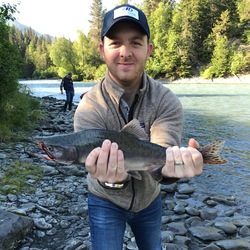

Château Clos L'Eglise
Pomerol Merlot - Cabernet Franc Blend 2005
3000th post. 🎉 On the nose; sweet, lush; black cassis, liqueur notes, sweet tarry notes, rich, lush; blackberries, dark cherries, black plum, plum, caramel, mocha, caramel, baking spices, warm, moist, rich, dark soils and fresh dark florals. The body is M and the tannins are round and soft. She is a beauty. Ripe, rich; blackberries, black plum, plum, dark cherries, black raspberries & poached strawberries. liqueur notes, sweet tarry notes, dark chocolate, mocha, caramel, baking spices, menthol, warm, moist dark earth, soft leather, dry rock powder, sweet black tea, fresh violets, dark, red florals, perfect round acidity and a rich, round, elegant fruit driven finish that last and lasts. Photos of; Clos E'Lgise and estate vines, signage, Helen Garcin-Leveque and her husband Patrice Leveque and their barrel cellar. Producer history and notes...Clos L’Eglise is one of the older chateaux in Pomerol dating back to the 18th century. The same time the farmhouse that is still in use was constructed. At the time, Chateau Clos L’Eglise was a larger estate. It once had been apart of the Gombaude Guillot. Eventually the estate was split in half. On one side of the street, you had Chateau Clos l’Eglise; which was owned by the Rouchut family. Across the street sat Chateau Clos l’Eglise-Clinet, which was owned by the Mauleon family. After awhile, Clos l’Eglise Clinet eventually changed its name to Chateau l’Eglise Clinet which also simultaneously gave birth to what we know today as Clos L’Eglise. While the wines are now produced by Helene Garcin that was not always the case with Clos L’Eglise. At one point, the estate produced wines under a leasing arrangement held by the Rouchut family. The modern era of Clos L’Eglise began in 1975, when the property facilities were all redesigned and modernized by the Moreau family. The Moreau’s also owned Chateau Plince. The old, non temperature controlled wood tanks were replaced by stainless steel. The vineyards were also expanded. Instead of buying more vines, the owners simply planted land that was being used as a pasture. Imagine now, Pomerol land being used to feed cattle. In the past, the property was planted with a much larger percentage of Cabernet Sauvignon, near 20%. All the Cabernet Sauvignon vines were eventually ripped out and replaced by Merlot. The next step of it's evolution took place in 1997 when the Right Bank estate was sold to Sylvaine Garcin Cathiard by the Moreau family. If the Cathiard name sounds family, she is the sister of Daniel Cathiard, the owner of Chateau Smith Haut Lafitte. The sale set a new benchmark price for Pomerol when it sold for 12 million Euros! Today that price would be laughable! Prior to 2000, that was considered a huge price for Pomerol. Further investment was needed to replace the aging concrete vats and again modernize the facilities. In fact, the first vintage of Clos L’Eglise made by Helene Garcin was produced at Haut Bergey in Pessac Leognan. Helene Garcin also manages two estates in St. Emilion, Chateau Barde Haut, Chateau Poesia (Mendoza, Argentina) and Branon, which is situated in Pessac Leognan. Helene Garcin was put in charge of the property. She hired Michel Rolland as a consultant and a complete renovation of the facilities took place. Michel Rolland was eventually replaced by Alain Raynaud. Starting with the 2015 vintage, Thomas Duclos recently replaced Alain as the consultant. Their property is nearly 6 hectares. L’Eglise soils are rich clay, gravel and iron. It's located on a sloping hill near Chateau Clinet, Chateau L’Eglise Clinet and Chateau Trotanoy. Clos L’Eglise is planted to 80% Merlot and 20% Cabernet Franc. On average, the vines are 35 years of age. There is one old parcel of Cabernet Franc that was planted in the 1940’s. Vinification of Clos L’Eglise takes place in 55 hectoliter, insulated, stainless steel tanks. The new steel tanks replaced the oak vats in 2012. Malolactic fermentation takes place in barrel. Clos L’Eglise is aged in 100% new French oak for between 16 and 18 months. The property also has a second wine, Esprit de L’Eglise. On average, about 1,200 cases of Clos L’Eglise are produced every year. — 8 years ago

Chateau Montelena
Napa Valley Chardonnay 2013
Tasting notes from a Judgement of Paris anniversary event at Cadillac Wines tonight...
Tart, green apple, and great acidity. Very little butter, which was a refreshing take on a chard. Same recipe has been used to make this wine since the beginning. Great history. — 10 years ago
Charles Krug
Napa Valley Cabernet Sauvignon
History in a bottle — 12 years ago
Beaux Frères
The Upper Terrace Pinot Noir 2010
Lessons in history. — 12 years ago
Château Soutard
Saint-Émilion Red Bordeaux Blend 1985
Awesome. Great acid! History in my mouth! — 13 years ago
Orin Swift Cellars
Abstract Grenache Blend 2016
History dates back to 1995 when on a lark, David Swift Phinney took a friend up on an offer & went to Florence, Italy to spend a semester “studying”. During that time, he was introduced to wine, how it was made, & got hooked. A Grenache, Syrah & Petite Sirah blend. Aromas of fresh ripe red fruits with floral & spice. On the palate flavors of cherry & raspberry with cacao & espresso notes on sweet savory soft tannins, well balanced, lingering finish ending with fruit & toasty oak. Nice! Consistent Quality! — 7 years ago
Château Calon-Ségur
Saint-Estèphe Red Bordeaux Blend 1996
On the nose, a touch of barnyard. Sweet & sour dark cherries, blackberries, black raspberries, baked strawberries and hues of blue fruits. Dry crushed rocks, dry stones, rich black turned, soft leather, cedar, underbrush, tobacco, light vanilla & clove, medium spice, limestone, fresh & withering dark red floral bouquet.
The body is just full. The tannins are soft, rounded, chewy & sticky and still have some teeth. The wine elegantly guides smooth over the palate...very little that pushes back. It’s still youthful but not as youthful as my expectation. Sweet & sour dark cherries, blackberries, black raspberries, baked strawberries and hues of blue fruits. Dry crushed rocks, dry stones, rich black turned, soft leather, cedar, underbrush, tobacco, some dry herbal notes, sweet tarry notes, light vanilla & clove, medium spice, powdery limestone, loamy clay & top soil, graphite, dark spice with lifting heat, fresh & withering dark red floral bouquet and haunting violets. The acidity is near perfect. The structure, tension, length are in a very place but, will still improve for another 15+ years. The long, finish is ripe, round, balanced and lasts minutes.
Photos of, the Chateau, Technical Director Vincent Millet, beautiful stainless steel tank room and their new barrel room.
Producer notes & history...historic records show that Calon Segur was in existence as far back as 1147, when it was owned by Monseigneur de Calon. He was an important Bishop in the community. This makes Chateau Calon Segur one of the very oldest properties in Saint Estephe. Eventually, the property came to be owned by Nicolas Alexandre de Segur. Hence where part of the name of the Chateau comes.
After passing through generations, the estate became the property of the famous Marquis de Segur. de Segur is an important figure in Bordeaux history, not only for his ownership of numerous top Bordeaux estates in that day but, he also owned Lafite and Latour. de Segur is credited with uttering the words that spawned the idea behind the heart shaped logo of Calon Segur. The story is that de Segur is quoted as saying: “I make my wine at Lafite and Latour, but my heart is in Calon.” This famous saying lives on the label of Chateau Calon Segur, where the drawing of a heart is prominently featured on the bottle.
Chateau Calon Segur was one of the original three Bordeaux vineyards in Saint Estephe. In 1825 Chateau Montrose was a forest without a single vine belonging to the massive Calon Segur estate. In fact, Chateau Phelan Segur was also once part of the vast Segur estate. The holdings of the Segur family were so large, they included what would later became Chateau Lafite Rothschild, Chateau Latour and Chateau Mouton Rothschild!
The more modern era by European standards began in 1894 when its Left Bank vineyards were purchased by Georges Gasqueton and Charles Hanappier. Hanappier was a large negociant at the time. The Gasqueton family managed the estate until 2012. Madame Gasqueton ran the estate until she passed away at the age of 87 in late September, 2011.
In July of 2012, Chateau Calon Segur was sold for 170 million Euros or 215 million US dollars. The buyer was a French Insurance Company, Suravenir Insurance. Jean-Pierre Moueix, the owner of Petrus and the massive negociant company Duclot also took a minority stake in Chateau Calon Segur.
Since taking over Calon Segur, they started renovating the property with the focus on the wine making facilities. They followed a trend to vinify on a parcel by parcel basis. The estate replaced their older vats with new stainless steel tanks that vary in size and number to match the size of the various vineyard parcels.
The new tanks accompany a completely new vat room as well with everything moving completely by gravity. The new tasting room was remodeled as well. The renovations were completed in 2016.
Their cellars also needed work. Immediately after closing, the new owners began an extensive replanting of the Calon Segur vineyard. There were a number of reasons they chose to do this. They needed to increase the level of vine density and add more Cabernet Sauvignon.
The extensive renovation of Chateau Calon Segur cost somewhere north of 20 Million Euros. Other changes, the new owners took full control and brought in Vincent Millet as the Technical Director.
The 55 hectares of Calon Segur are located just north of the small town of St. Estephe and are planted to 53% Cabernet Sauvignon, 38% Merlot, 7% Cabernet Franc and 2% Petit Verdot.
Chateau Calon Segur is one of the few walled in vineyards in the Left Bank. Calon Segur is also known as being the northern most Classified Growth in Medoc.
The terroir of Calon Segur is a blend of gravel, rocks, clay, sand and limestone soils on the surface with gravel that can be as deep as 5 meters. Underneath, you find marl, clay and limestone.
On average, the vines are 25 years of age. However, they have older vines that range in age from 45-60 years of age.
The vineyard of Chateau Calon Segur remains almost exactly the same as it did at the time of the 1855 Classification.
Since the remodel was completed, fermentation takes place in 70 conical shaped, stainless steel tanks that range in size from 25 hectoliters to 120 hectoliters. Vintages are now aged in 90% to 100% new, French oak barrels for up to 20 months.
Production of Chateau Calon Segur is around 20,000 cases per year. They also make a second wine, which was originally named Marquis de Calon. Now, the second wine is sold under the name of Le Marquis de Calon Segur.
There is also a third wine, which is sold under two names, La Chapelle de Calon, and St. Estephe de Calon Segur, which is produced from vines that mostly come from a specific plot with more limestone. — 8 years ago
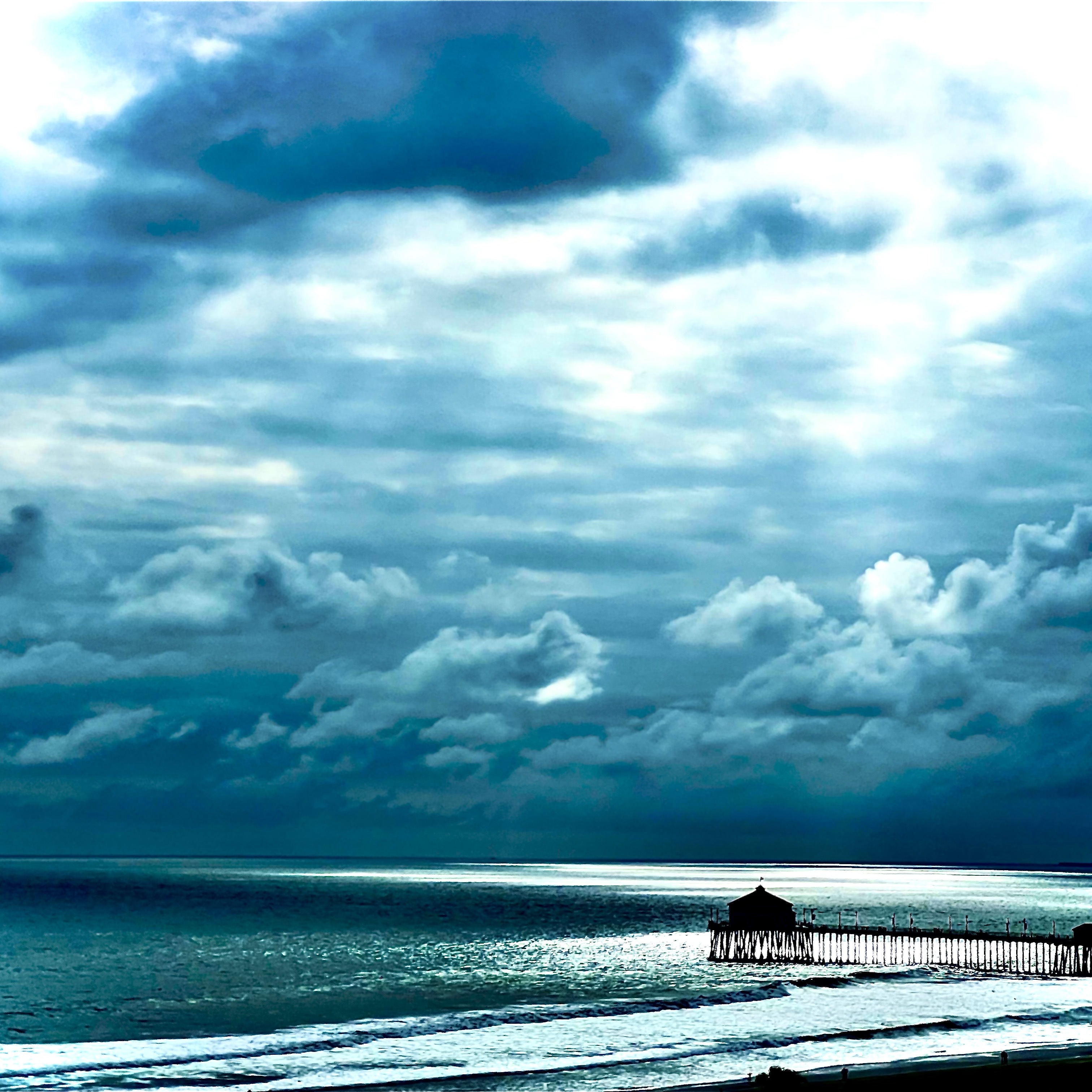
Château Pichon Longueville Comtesse de Lalande
Pauillac Red Bordeaux Blend 2014
Pichon-Lalande is the single hottest property in the Médoc right now. Although the Chateau has a long and esteemed history, a Second Growth in the Bordeaux Wine Official Classification of 1855, no less, it is the winemaking today that is taking the property to new heights. If you are looking to treat yourself with a wine that is truly world class in every sense, then look no further. The wonderfully nuanced, finessed 2014 Pichon-Longueville Comtesse de Lalande exudes pedigree. Crème de cassis, licorice, lavender and sweet spices are front and center, while beams of supporting tannins and acidity give the wine its energy and overall tension. All of the elements are simply in the right place. Powerful and also remarkably delicate, the 2014 Pichon Comtesse might very well be the wine of the vintage on the Left Bank. Don't miss it! (Antonio Galloni, Vinous, Feb 2017) — 8 years ago
Corison
Napa Valley Cabernet Sauvignon 2010
On the nose, stewed fruits of; black plum, blackberries, dark cherries, plum and blueberries. Mocha, chocolate, mixed berry cola, sweet spice, cinnamon, nutmeg, caramel, loamy mineral soils and dry dark florals. The mouthfeel is less concentrated than other vintages of Corison but that's indicative of the 10 Napa vintage generally. The tannins are nicely resolved with another 5-8 years before they are completely resolve. The fruits are; dark cherries, black plum, plum, black raspberries, blackberries with strawberries that dance around the rest of the fruit. There's nice barrel toast, vanilla, nutmeg, light clove, cinnamon, touch of wood shavings, liqueur notes, caramel, mocha chocolate, mix berry cola, loamy soils, dry crushed rocks, bramble, dry stems with nice soft round acidity. The finish is a little lean but tasty. Good balance of fruit and earth with long, rich elegance. Cathy slightly overachieved the 10 vintage as a whole. Photos of; her estate building, Cathy in her vineyard, grapes coming in at night (better to harvest when the fruit is cooler) and her estate vineyard in all it's glory. Producer notes and history...Cathy Corison grew up in Riverside, California. She studied biology at Pomona College and was on their men's diving team, because the school didn't have a women's team. In 1972, she had to take an extracurricular class. She signed up for a trampoline class, but changed her mind upon seeing a sign-up sheet for a wine tasting class. This class was the catalyst that sparked her interest in winemaking. After graduation in 1975, she moved to Napa Valley in California. She received her Master's degree in Enology from University of California, Davis. Upon moving to Napa, she started working in the tasting room at Sterling Vineyards and at a wine shop. During this time, she was getting her Master's degree at the University of California, Davis. She was told by her professor that she would not get a job in Napa Valley because of being a woman. However, if she wasn't the first Napa Valley female Winemaker, she was certainly one of the first. She tried to get a job at Freemark Abbey and was denied because they believed she could not work in the cellar. She almost took a job at Christian Brothers in the enology lab. However, she decided not to take the job and in 1978 she became an intern at Freemark Abbey and eventually became their Winemaker. She joined Chappellet in 1983 and was their Winemaker for nearly ten years. She founded Corison Winery, in 1987. The winery is located in St. Helena, California in a barn built by her husband, William Martin. Corison makes Cabernet and Gewürztraminer. They produce about 3,500 cases a year depending on the vintage. The winery makes a Kronos Vineyard Cabernet Sauvignon and as well as a Napa Valley Cabernet Sauvignon. The Kronos is an estate wine that is made from organic grapes. The vineyard is dry farmed. The grapes come from one of the oldest vineyards in Napa Valley. The Napa Valley Cabernet comes from Rutherford. The Gewürztraminer is called Corazón and comes from the Anderson Valley. — 8 years ago

Heitz Cellar
Martha's Vineyard Cabernet Sauvignon 1969
More history than anything. The wine was pretty dead but there was just a little bit of life left. Mostly raisins but lots of dying mint, tobacco and older oak character. No tannin at all. — 10 years ago
Stag's Leap Wine Cellars
Artemis Napa Valley Cabernet Sauvignon
A taste of history — 10 years ago
Ridge Vineyards
Monte Bello Ruby Cabernet Cabernet Sauvignon Blend 1978
A piece of CA history. Ruby Cabernet was bred at UC Davis, a cross between cab sauv and Carignane, typically used for jug wine, but this one was lovingly made by Paul Draper, nose a bit tired, but a lively three-dimensional palate, with refined pebbly tannins. — 12 years ago




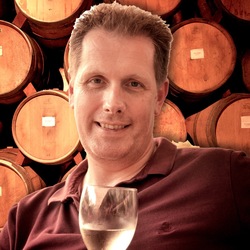


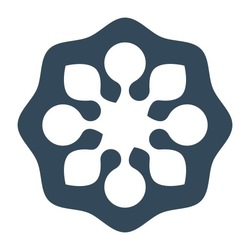


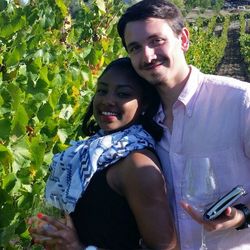





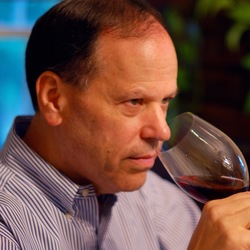




Sipping Fine Wine
History of Chapoutier family dates back to early 19th century when current owner Michel Chapoutier’s great-, great-, great-grandfather Marius purchased estate & famous l’Hermitage vineyards. Deep Purple (with a little smoke on the water), 100% Grenache with aromas of dark fruit and complex exotic spice. Plum, berry & current flavors with nutty tobacco develops into sweet licorice. Tannins a bit grippy but will soften, lingering, balance ending with fruit and spice. Nice!
— 7 years ago